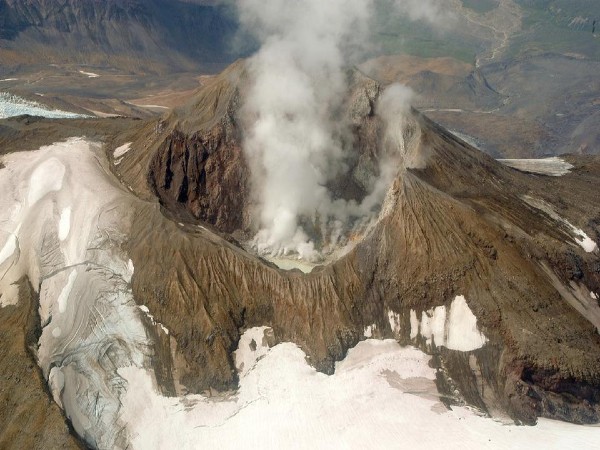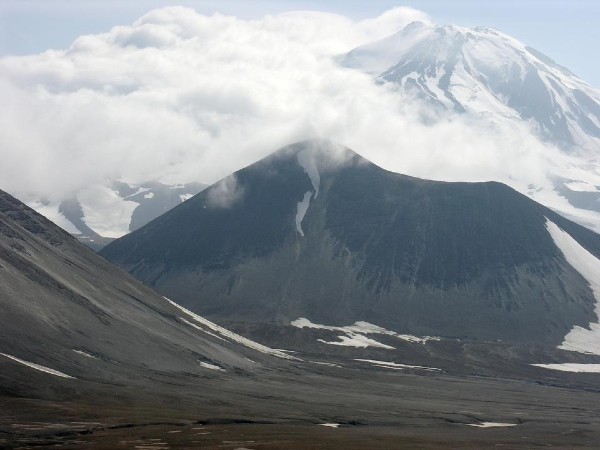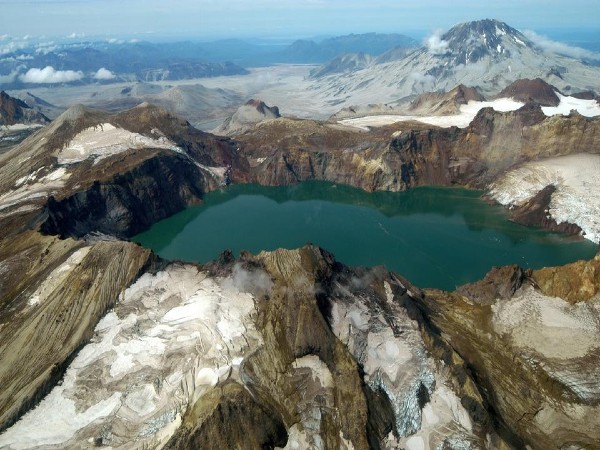Few of the great news stories of the early 20th century enjoyed such immediate reportage as the Katmai mountain story. On the steamship, Dora, bound for the port of Kodiak on Kodiak Island. Alaska, on June 6, 1912, the captain logged, at precisely 1 pm: 'Sighted heavy column of smoke directly astern rising from the Alaska Peninsula. I took a bearing of same, which I made out to be Mount Katmai, distance about 55 miles (88km) away.'
Accompanied by fierce winds and lightning flashes, the smoke overtook the ship two hours later, smothering it in white ash that blotted out even the surface of the sea. Ash covered Kodiak, too, roofs collapsing under its weight.

At cold Bay on the Alaska Peninsula, a severe earthquake was followed by a tremendous explosion that was also noted on the British Columbian border nearly 800 miles (1300km) away. More explosions reverberated through the night and the following day, culminating at 10.40 pm on June 7 with a flash of yellow light from a mountain of Incandescent volcanic ash that lit up the area 'like sunshine. The next day, the familiar silhouettes of distant peaks confirmed a witness's statement: 'The top of Katmai Mountain blew off.'

Later estimates suggested that some 33 billion tons of Erath's crush had been spread as dust and ash over vast areas of the American north-west, and also shot up into the stratosphere. There, during the next year or so, the material encircled the northern hemisphere, deflecting some ten per cent of the sun's energy and causing cooler summers and colder winters everywhere.

Not until 1915 was an American botanist, Dr Robert F. Griggs, able to lead an expedition to the Katmai Valley. Ther they found a wasteland of mud, quicksand and pumice dust, with not a tree or blade of grass left alive. The ground rang hollow beneath their feet and, when struck hard it gave way to reveal steaming sulphurous fissures. Wisely, the party retreated. But they returned the following year, when they cautiously skirted new, yawning ravines to reach the top of Mount Katmai.
The summit had been replaced by a pit 2.5 miles (4 long and more than 2000ft (600m) deep. At the bottom gleamed a lake of vitriolic blue-green. Farther on, the expedition a valley whose fissured floor emitted thousands of columns of steam that climbed high into the sky. The awed Griggs named it the valley of Ten Thousand Smokes. At the upper end, about 6 miles (10km) from Mount Katmai, he discovered a new, small, volcano; it was christened Novarupta.

This was the clue to the disaster. Katmai had not blown up at all - it was the new volcano that had exploded, raining molten rock from Katmai by way of underground fissures and so causing the unsupported summit to collapse inwards.



 Click it and Unblock the Notifications
Click it and Unblock the Notifications























